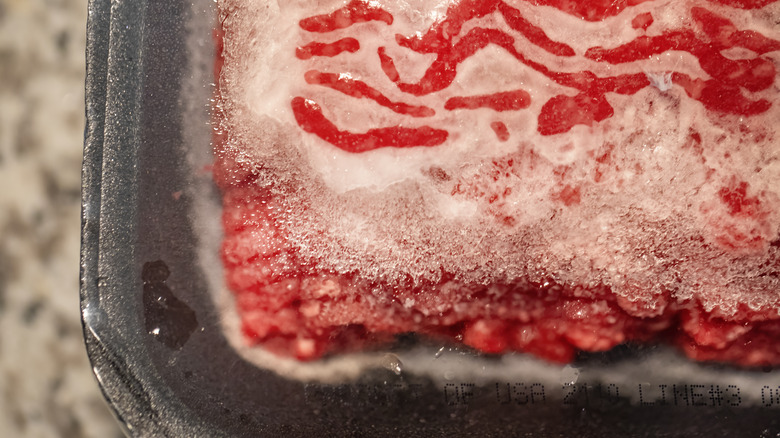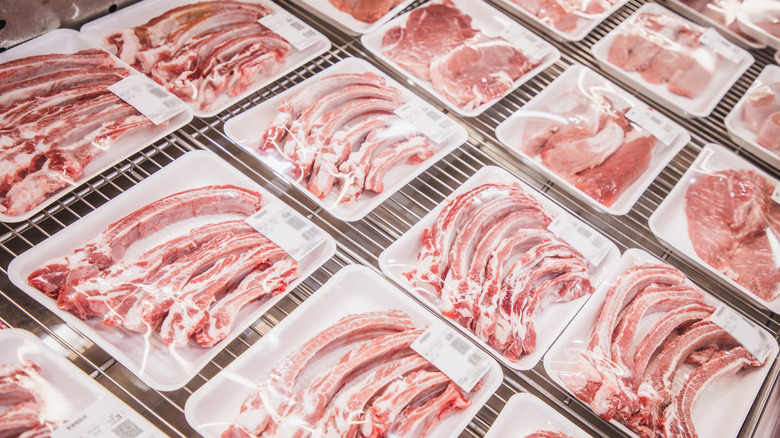Why Defrosting Old Meat Is A Mistake You Need To Avoid
Groceries are expensive, and freezing meat when you get a good deal on it is a no-brainer for households trying to shop smart and keep a lean budget. Sometimes, however, life gets away from us, and that package of meat in the back of the freezer hangs out unnoticed for a long time. Can you successfully defrost old meat and make it for dinner? In the strictest terms of food safety, yes. The USDA confirms that food stored at below-freezing temps will be safe to consume pretty much forever.
Thawing and cooking meat that you actually want to eat, however, is a different story. One of the biggest mistakes when it comes to defrosting meat is not realizing that, over time, the quality of the protein starts to degrade. The texture gets weird and the flavor goes off, leaving a chunk of less-than-appetizing meat.
It's a scientific fact that freezing meat alters it on a cellular level. The color, pH, and levels of solutes in the meat all change as ice crystals form. These changes aren't a big deal when you eat meat within a reasonable time frame – which varies depending on the type and cut of meat – but they make a drastic difference when the package has been hiding in deep-freeze for, say, a year. To avoid waste and keep your meat tasting its best, you need to defrost it within a few months.
To avoid wasting meat, store smart
All this is not to say that you shouldn't freeze meat. Knowing how to do it the smart and safe way is a high-tier adulting skill, to say nothing of the many myths about defrosting that you should stop believing. We're just saying that knowledge is power, and it's best to buy meat with a plan.
The keys to storing freezer meat and not wasting it are to wrap your packages the right way and label them prominently, so that you can identify old meat and either eat it or dispose of it. Don't rely on the tiny "best by" dates printed on the package. Not only do these tell you nothing about how long the meat has actually been in your freezer, they can fade. You shouldn't be storing meat in its original packaging, either. Instead, break these packages down into how much meat you'll need for a meal and store them in airtight bags or containers. Take a Sharpie and mark the new package with the date it was put in the freezer.
When you buy new meat, make sure to rotate your stock so that the oldest products are at the top and ready to use. This system should keep you from losing old meat to forgetfulness. And, when you do defrost your nice, fresh meat, consider setting it to thaw in a casserole dish (in the fridge, never on the counter!). This food-safe method will contain bacteria and mess.

